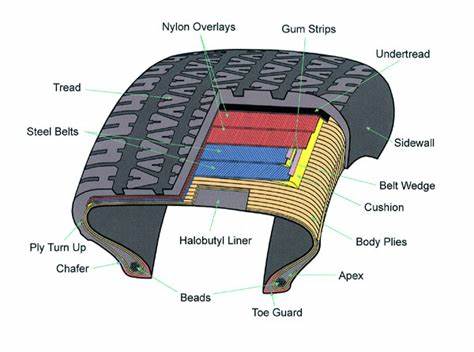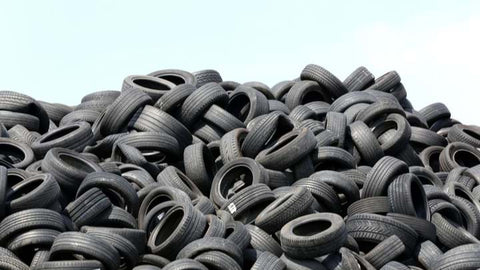In a world driven by thriftiness and eco-consciousness, the appeal of snagging a deal on used goods often lures us in. From vintage clothing to refurbished electronics, the allure of secondhand treasures can be irresistible. However, when it comes to a crucial component like tires, the gamble of buying used isn't worth the risk. Purchasing pre-owned tires might seem like a cost-effective choice, but beneath the surface lurk dangers that compromise both safety and reliability.
Unpredictable Wear and Tear

Tires endure a relentless barrage of wear and tear throughout their lifespan. The extent of degradation hinges on various factors: road conditions, driving habits, and maintenance routines. When considering used tires, evaluating the degree of wear becomes a daunting task. Unlike other pre-owned items where wear might be visibly apparent, gauging tire tread depth and overall condition demands expertise and specialized equipment.
Even tires seemingly sporting ample tread depth could conceal lurking defects such as internal damage, punctures, or frail sidewalls. These issues often elude visual inspection, posing a substantial risk to unsuspecting buyers. Consequently, the unpredictability of wear and tear makes accurately estimating a used tire's remaining lifespan and safety a challenging feat.
Compromised Structural Integrity

Tires are meticulously engineered to exact specifications, ensuring optimal performance and safety on the road. However, a tire's structural integrity can erode over time, especially if subjected to harsh conditions or neglectful upkeep. Acquiring used tires means inheriting the unknown history of their previous owner, including potential mistreatment or disregard.

Exposure to extreme temperatures, overloading, underinflation, or improper storage can weaken a tire's structure, rendering it vulnerable to failure. Even minor blemishes like cracks or bulges can jeopardize a tire's ability to withstand the rigors of everyday driving. Without comprehensive insights into a tire's past and maintenance, buyers risk investing in tires that are structurally compromised and liable to catastrophic failure.
Lack of Warranty and Recourse

In stark contrast to new tires, which typically come with manufacturer warranties and consumer safeguards, purchasing used tires offers scant protection in case of defects or mishaps. Once the transaction is sealed, the buyer assumes full responsibility for the tire's condition and performance. Any issues that surface post-purchase—be they hidden defects or premature wear—become the buyer's sole burden.
Moreover, the absence of a warranty leaves buyers with little recourse for seeking compensation or replacement in the event of a faulty purchase. Unlike reputable tire retailers who stand by their products and offer customer support, sellers in the used tire market often provide limited or no guarantees regarding quality or safety. This lack of accountability further underscores the risks associated with buying used tires.
Incompatibility and Mismatched Sets

Tires aren't interchangeable components; they're meticulously designed to harmonize with specific vehicle models and driving conditions. Mismatched tires—whether in size, tread pattern, or performance characteristics—can compromise handling, traction, and overall safety. Acquiring used tires entails a substantial risk of winding up with a mismatched set that fails to meet the vehicle's requirements or the driver's expectations.
Furthermore, the availability of used tires in the desired size or specification may be scarce, compelling buyers to compromise compatibility in pursuit of savings. However, the ramifications of employing mismatched tires can be dire, ranging from diminished fuel efficiency and uneven wear to compromised stability and heightened accident risk. The inherent uncertainty surrounding used tire compatibility underscores the importance of investing in properly matched sets for optimal performance and safety.
Hidden Defects and Safety Hazards
Used tires can conceal an array of hidden defects and safety hazards that evade immediate detection by the untrained eye. From internal damage resulting from impacts or improper repairs to deterioration stemming from prolonged exposure to the elements, the potential risks associated with used tires are manifold. Even tires appearing to be in good condition upon visual inspection may harbor latent issues compromising safety and performance.
Moreover, the proliferation of counterfeit tires in the used tire market further amplifies the risk of inadvertently purchasing substandard or hazardous products. Counterfeit tires are often crafted using inferior materials and construction methods, rendering them prone to premature wear and failure. Without rigorous quality control measures and regulatory oversight, buyers remain vulnerable to the perils posed by counterfeit tires masquerading as genuine articles.
Conclusion
While the allure of snagging a bargain may be enticing, the hazards of buying used tires far outweigh the potential rewards. From unpredictable wear and tear to compromised structural integrity and concealed defects, the pitfalls of purchasing pre-owned tires jeopardize safety and reliability on the road. Furthermore, the absence of warranties, compatibility concerns, and environmental considerations underscore the inherent risks of relying on secondhand tires.
In a landscape where road safety and sustainability are paramount, consumers must prioritize investing in high-quality, properly matched tires from reputable manufacturers and retailers. While the allure of cost savings may be compelling, compromising on safety and reliability is a gamble not worth taking. By making informed decisions and prioritizing safety over short-term savings, consumers can ensure a smoother and safer journey on the road ahead.

